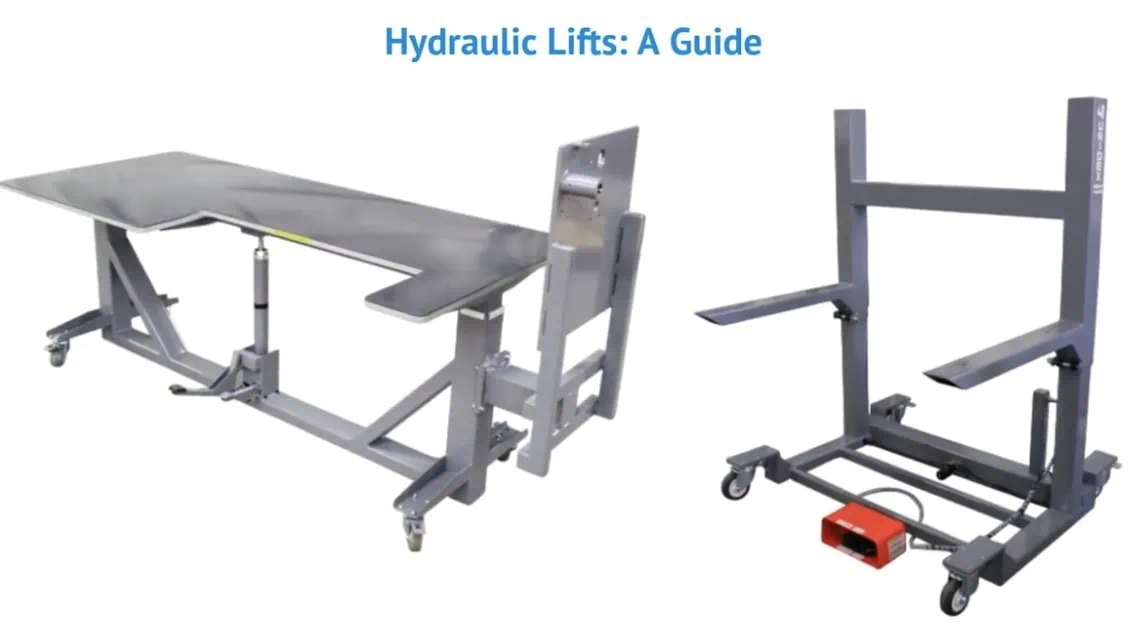Hydraulic Lifts: A Guide
Hydraulics is a specific branch of fluid mechanics that is focused on the engineering applications of fluids, often water and oil, inside systems. A hydraulic lift uses liquid contained in a sealed system to create and control the movement of objects and lift loads efficiently. Learn more about how they work and some of the many types of hydraulic lifts available.
An Overview of Hydraulic Lifts
Hydraulic lifts are used to safely and reliably raise heavy loads of equipment, materials, or people. They are widely used in manufacturing and production plants, warehouses, construction sites, and hospitals, and some versions can even be found in commercial businesses or private homes. The primary advantage of choosing hydraulics for lifting loads is that the movement is smooth and steady, which limits the risk of jostling or dropping items as the platform is moving. These systems are also capable of moving very heavy loads without taking up a large amount of space, thanks to the compact nature of hydraulic cylinders.
How Do Hydraulic Lifts Work?
Although there are many different applications for hydraulic lifts, they all share the same basic operating principle, known as Pascal’s law, which describes how fluids can be used to transmit force.
Hydraulic systems use incompressible liquids, which are those whose volume changes little as pressure is applied to them. When force is applied to liquid that is sealed in a container (i.e., hydraulic cylinder), the pressure is transmitted equally throughout the liquid and to the walls of the cylinder. As a result, the force can be transmitted to a piston, causing it to move.
Most hydraulic lift systems include these five components:
- Cylinder. Cylinders are hollow metal tubes with telescoping sections that extend and retract, lifting or lowering a platform that carries the load. The hydraulic fluid is sealed inside the cylinder.
- Hydraulic Fluid. Most hydraulic systems use oil to transmit force and provide lubricity for the cylinder.
- Piston. The piston sits inside the cylinder and is connected to the lift platform. It moves up as the main cylinder expands and down as it retracts.
- Pump. The pump pushes fluid into the cylinder, generating pressure that makes the fluid—and the rest of the system—move up or down.
- Valve. The fluid moves through a valve, which can be opened or closed to manage the flow of oil and start, stop, or control the speed of the platform’s movement.
Types of Hydraulic Lifts
There are many different ways to configure the basic components of a hydraulic lift system for specific applications, whether that involves lifting and lowering equipment, transporting it across a warehouse, or elevating a worker to reach overhead equipment. Some of the most common types of industrial and commercial lifts include the following:
- Lift Table. Common in the transportation industry, lift tables can lift loads from the floor to a workable height or to the height of a truck bed.
- Personnel Lifts/Aerial Lifts. These lifts can carry personnel and equipment safely. They assist workers who need to access tall shelves, reach elevated control panels, or repair electrical lines.
- Forklifts. Forklifts are usually found in factories, construction sites, and warehouses. Operators can lift heavy items or palletized loads with the hydraulic-powered fork and then drive them to a new location.
- Medical Lifts. Medical lifts are used to raise and lower hospital beds, surgical tables, and equipment. Staff can easily make small adjustments to the height of the platform along with the angle for improved comfort and accessibility.
- Automotive Lifts. Mechanics use automotive lifts to raise vehicles off the ground for easier access underneath the vehicle. These lifts are designed to allow the mechanics to reach parts and components on the underside of the vehicle, while still supporting the heavy load of the car or truck.
- Post Car Lifts. This is a specialized type of automotive lift that can raise any type of vehicle. It features two posts with four arms and a hydraulic drive on each post.
- Platform Lifts. These lifts have a large horizontal platform for lifting up groups of people and large loads or pallets. They can reach a range of heights while staying level and stable.
- Custom Hydraulic Lifts. Depending on the application, a custom lift may be the most suitable solution. Some of the important factors for custom lifts are:
- Frame size
- Stroke (i.e., total distance the lift can move from fully extended to fully retracted)
- Speed
- Material options such as stainless steel, laminates, or ESD linings
- Safety features, including lock-up bars or explosion-proof materials
- Single- or multi-axis rotation
- Added features such as clamps, forks, tables, seats, or shelving
Hydraulic Lifts From Unidex
The right hydraulic lift can transform operations by safely moving heavy loads vertically or horizontally. At Unidex, we design and engineer a variety of sturdy and user-friendly hydraulic lift equipment, work positioners, portable lifts, and other industrial material handling solutions. Since 1991, we’ve also become a leading provider of customized equipment for raising, lowering, and moving small and large loads.
Contact us today to learn about our range of products or to discuss your application.




Comments are closed